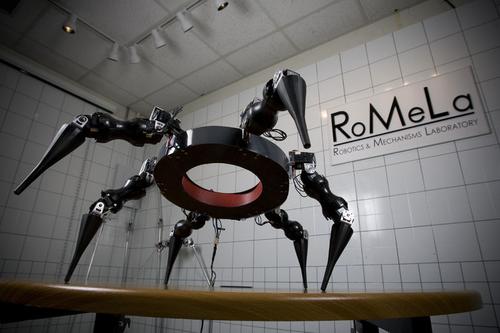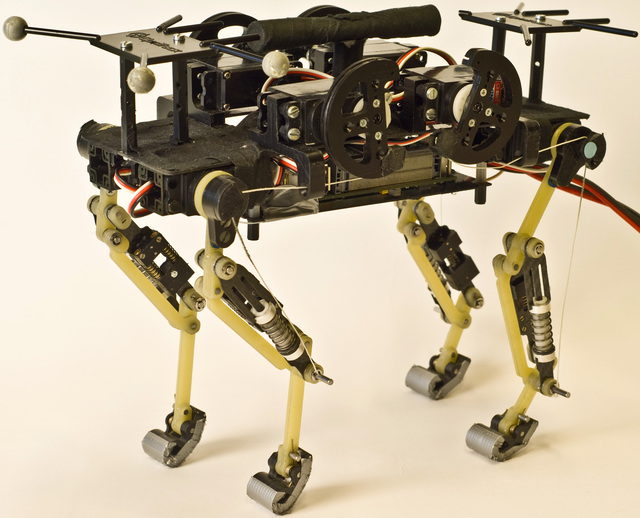Hello again, Everybody!
Glad to see you back.
In the last unit, we learned about simple machines.
In this unit, we will be looking at compound machines, and how they interact with each other to perform some of the more complex tasks that we typically think of when we think of how cool Robots are.
For this unit I want everyone to:
1) start by going over the basic information on compound machines, then I want you all to
2) look at the robot parts (directions below), and then
3) watch the videos on "What Is a Robot?" and answer the question in the comments, and then
4) play the games for your level (or both levels if you like to have fun playing computer games), and
5) do the bonus challenge by looking into the EDC and/or FIRST links below.
Compound (sometimes called Complex) Machines
Let's start by thinking about what compound machines are, and what they might look like in daily life. Look at the image below to get some ideas.

Here's another set of examples of simple machines combined with each other to create common compound machines in our everyday lives. Be sure to look at (and think about) where the load is applied for each of the compound machines, and how changing the location of the load (or force) changes the way the machine functions:
Now let's look at some images of robot parts, and see if we can identify how the simple machines are combined to perform different functions. Notice how the even the different placement of the same simple machines yields drastically different results. It's all about good design getting the job done!
*Pro Tip: Don't spend too much time thinking about how the robots are powered or programmed--we'll get to that later!--just try to see which parts of the robots move, and try to figure out which directions those parts move in. For instance, does the leg or arm move in a circle (like your arm at the shoulder) or does it move forward and backward (like a train on a track), or does it swing like the hinge on a door (or like your knee)?
Some Examples:
I could really spend all day looking at pictures of different kinds of robots, trying to figure out how they work (and I bet you could, too!) but I think you'll have more fun if you spend some time looking up different types of robots on your own. Spend a little bit of time this week looking at robot images, it doesn't matter if they are real, working robots or if they are drawings or even toys. Just try to find the levers, pulleys, wheels and axles, inclined places and screws and think about how they work together to do awesome things.
So what is a robot?
Here's the dictionary definition:
Level 1
Try this game! EdHeads "The Compound Machine"
Then, try this game, too! Design Squad Fidget Factory
Level 2
Test your understanding of compound machines and how they interact with one another by looking at some of Leonardo's Mystery Machines! Can you figure out how they work?
Surprisingly difficult puzzle/maze game: Build a Toy
How far can you get?
Play NASA's ROVER control game
Bonus Challenges!!!
NASA unveiled an Exploration Design Challenge on March 11, 2013,
to give students from kindergarten through 12th grade the opportunity to
play a unique role in the future of human spaceflight. The innovative
educational opportunity was announced in a special event at NASA's
Johnson Space Center in Houston.
Read more about the EDC by clicking here ...
2) FIRST - For Inspiration and Recognition of Science and Technology
FIRST was founded in 1989 to inspire young people's interest and participation in science and technology. Based in Manchester, NH, the 501 (c) (3) not-for-profit public charity designs accessible, innovative programs that motivate young people to pursue education and career opportunities in science, technology, engineering, and math, while building self-confidence, knowledge, and life skills.
To learn more about FIRST programs you might want to get involved in, click here
Glad to see you back.
In the last unit, we learned about simple machines.
In this unit, we will be looking at compound machines, and how they interact with each other to perform some of the more complex tasks that we typically think of when we think of how cool Robots are.
For this unit I want everyone to:
1) start by going over the basic information on compound machines, then I want you all to
2) look at the robot parts (directions below), and then
3) watch the videos on "What Is a Robot?" and answer the question in the comments, and then
4) play the games for your level (or both levels if you like to have fun playing computer games), and
5) do the bonus challenge by looking into the EDC and/or FIRST links below.
Compound (sometimes called Complex) Machines
Let's start by thinking about what compound machines are, and what they might look like in daily life. Look at the image below to get some ideas.

Here's another set of examples of simple machines combined with each other to create common compound machines in our everyday lives. Be sure to look at (and think about) where the load is applied for each of the compound machines, and how changing the location of the load (or force) changes the way the machine functions:
Now let's look at some images of robot parts, and see if we can identify how the simple machines are combined to perform different functions. Notice how the even the different placement of the same simple machines yields drastically different results. It's all about good design getting the job done!
*Pro Tip: Don't spend too much time thinking about how the robots are powered or programmed--we'll get to that later!--just try to see which parts of the robots move, and try to figure out which directions those parts move in. For instance, does the leg or arm move in a circle (like your arm at the shoulder) or does it move forward and backward (like a train on a track), or does it swing like the hinge on a door (or like your knee)?
Some Examples:
I could really spend all day looking at pictures of different kinds of robots, trying to figure out how they work (and I bet you could, too!) but I think you'll have more fun if you spend some time looking up different types of robots on your own. Spend a little bit of time this week looking at robot images, it doesn't matter if they are real, working robots or if they are drawings or even toys. Just try to find the levers, pulleys, wheels and axles, inclined places and screws and think about how they work together to do awesome things.
So what is a robot?
Here's the dictionary definition:
noun: robot; plural noun: robots
Watch these videos, and then tell us what a "robot" is to YOU in the comments below:
| A robot doesn't HAVE to look like a person, in fact, many don't. Robots can also be made out of almost anything, as long as it has a power source, motion, and carries out some kind of task. In this video, the only task these kids require of their "bots" is that they move. Still, it looks like a lot of fun, and I wouldn't mind playing with one these little things! :) |
PBS Kids Design Squad: Bristle Bots
Level 1
Try this game! EdHeads "The Compound Machine"
Then, try this game, too! Design Squad Fidget Factory
Level 2
Test your understanding of compound machines and how they interact with one another by looking at some of Leonardo's Mystery Machines! Can you figure out how they work?
Surprisingly difficult puzzle/maze game: Build a Toy
How far can you get?
Play NASA's ROVER control game
Bonus Challenges!!!
Sept 4, 2013
Read more about the EDC by clicking here ...
2) FIRST - For Inspiration and Recognition of Science and Technology
FIRST was founded in 1989 to inspire young people's interest and participation in science and technology. Based in Manchester, NH, the 501 (c) (3) not-for-profit public charity designs accessible, innovative programs that motivate young people to pursue education and career opportunities in science, technology, engineering, and math, while building self-confidence, knowledge, and life skills.
To learn more about FIRST programs you might want to get involved in, click here



















